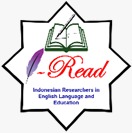Using Picture Series to Improve the Students’ Ability in Speaking Narrative Text
DOI:
https://doi.org/10.22219/englie.v1i1.13129Abstract
The research aimed at the use of picture series to improve the students’ speaking ability of tenth graders in narrative text. In accordance with the findings of preliminary study which showed that the students’ speaking performance was low, the researcher chose speaking as the focus skill to be improved. The skill was chosen because the students faced many difficulties to perform this skill, such as the lack of vocabulary, the coherence in speaking, and the difficulty to express the ideas. The study applied a classroom action research that was conducted in two cycles consisting of five meetings. The subject of this research was 34 tenth grade students of SMAN 4 Malang. The findings of the research revealed that using picture series improved the students’ speaking score in some aspects of speaking skills, comprising fluency, pronunciation, content, and coherence. Besides, it could make the student eager to be involved in the teaching and learning process.
Downloads
References
Burns, A. 2010. Doing Action Research in English Language Teaching: A Guide for Practitioners. New York: Routledge.
Chang, P. 2009. Teaching and Learning with Graphic Organizers. (Online), (http://english.tyhs.edu.tw/epaper/ep aper15/teach_share.pdf), accessed on
March 21st 2019.
Gerlach, S Vernon and Elly, P Donal. 1980. Teaching and Media a Systematic Approach. New Jersey Prentice Hall.
Givon, T. 1993. English Grammar: A Function Based-Interaction. Amsterdam: J. Benjamin Publishing.
Harmer, J. 2007. The Practice of English Language Teaching. New York: Pearson Longman.
Hart, A and Hicks, A. 2002. Teaching Media in English Curriculum. Media Education Journal. Tremtham Books Limited.
Jones, R.D. 2008. Strengthening Student Engagement-Engagement-Based Learning and Teaching Approach. New York: International Center for Leadership in Education.
Kemmis, S. & McTaggart, R.1988. The Action Research Planner (3rd Ed.) Victoria: Deakin University Press.
Latief, M.A. 2015. Research Method and Language Learning: An Introduction. Malang: Universitas Negeri Malang Press.
Pratiwi, Dwi. 2016. Improving the Tenth Grade Students’ Writing Skill by Using Picture Series. Journal of English Language and Education. Vol 2. No.1, page 11-17.
Richard, Jack C and Willy A Renandya. 2001. Curriculum Development in Language Teaching. Cambridge Umiversity Press.
Shih, C., & Gamon, J. 2001. Web Based Learning: Relationship among Student Motivation, Attitude, Learning Styles, and Achievement. Iowa: Journal of Agricultural Education, 42(2), 12-20.
Downloads
Published
How to Cite
Issue
Section
License
Copyright (c) 2020 Aprilia, D. D., & Andreani, S.

This work is licensed under a Creative Commons Attribution-ShareAlike 4.0 International License.
Authors who publish with English Learning Innovation (englie) agree to the following terms:
- For all articles published in English Learning Innovation (englie), copyright is retained by the authors. Authors give permission to the publisher to announce the work with conditions. When the manuscript is accepted for publication, the authors agree to automatic transfer of the publishing right to the publisher.
- Authors retain copyright and grant the journal right of first publication with the work simultaneously licensed under a Creative Commons Attribution-ShareAlike 4.0 International License that allows others to share the work with an acknowledgement of the work's authorship and initial publication in this journal.
- Authors are able to enter into separate, additional contractual arrangements for the non-exclusive distribution of the journal's published version of the work (e.g., post it to an institutional repository or publish it in a book), with an acknowledgment of its initial publication in this journal.
- Authors are permitted and encouraged to post their work online (e.g., in institutional repositories or on their website) prior to and during the submission process, as it can lead to productive exchanges, as well as earlier and greater citation of published work (See The Effect of Open Access).
This work is licensed under a Creative Commons Attribution-ShareAlike 4.0 International License.

















1.png)












